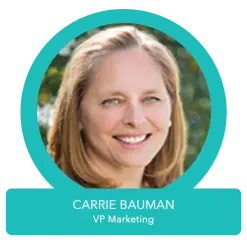
by Carrie Bauman
We are facing one of the most complex revenue environments in the U.S. healthcare system. With rising patient out-of-pocket medical costs, growing levels of medical debt, and shifting payer reimbursements, healthcare financial assistance is no longer just a support service; it is a frontline solution for revenue stability and patient trust.
Recent reports show that 27% of Americans struggled to pay medical bills in the past year, even with a health insurance program. Deductibles and copays are higher than ever, and surprise billing laws have added new layers of regulation. In this climate, if you are not proactively managing healthcare financial assistance, you are losing both revenue and reputation.
Patients are not just receiving care; they are navigating a financial system they do not understand. Many of them are unaware they qualify for financial assistance in healthcare. Others are overwhelmed by the paperwork or embarrassed to ask. Meanwhile, your billing team is juggling manual workflows, complex eligibility rules, and denial-prone processes related to hospital financial assistance programs.
When financial assistance programs are not integrated into front-end systems, your revenue cycle absorbs the cost. From late payments and bad debt to excessive write-offs, the impact is clear. But the solution does not have to mean more labor. It means working smarter with technology that does the heavy lifting to support financial assistance for healthcare.
AI-driven analytic platforms are transforming how healthcare financial assistance is delivered across the revenue cycle. Instead of relying on manual review and post-service outreach, you can use real-time data and predictive modeling to flag patients who are likely to qualify for medical bill assistance before they ever receive a bill.
These systems work behind the scenes to scan eligibility based on demographic, payer, and income information. They guide your front-desk staff through pre-screening conversations. They help automate the application process for charity care, Medicaid, or payment plans. And most importantly, they integrate with your EHR and billing systems to ensure that once eligibility is confirmed, the medical assistance programs are applied without delay or error.
The result is a smoother experience for your patients, faster reimbursement for your facility, and a reduced burden on your finance and registration teams.
Let us break it down into two major categories: operational efficiency and financial impact.
These benefits go far beyond cost savings. They improve your staff’s productivity, reduce patient complaints, and elevate your overall financial performance.
The financial headwinds are growing. According to the American Hospital Association, over 70% of critical access hospitals are currently operating at a loss. Even large health systems are seeing revenue leakage from uncompensated care and poor collections.
Medicaid underpayments, delayed government disbursements, and growing populations of uninsured or underinsured patients are squeezing your margins tighter than ever. At the same time, the expectations for transparency and financial fairness from patients and regulators have never been higher. You need a way to close the gap between affordability and accessibility, and doing it manually is no longer feasible. By introducing AI into your healthcare financial assistance program, you create a scalable system that supports both patients and profit.
You do not have to overhaul your entire system overnight. Many organizations start with a phased rollout, integrating AI-powered financial assistance for healthcare tools in a single department, such as emergency services or surgery, and then expanding once results are validated.
Begin by identifying the most common points of financial friction in your patient journey. Are cost estimates unclear? Missed eligibility? Application abandonment? Then select an AI platform that can connect to your existing systems and address those pain points with automation and intelligence.
Do not forget the human element. Your staff still plays a vital role in helping patients feel heard, respected, and cared for. Train them to use the technology as a tool, not a replacement, and focus on conversations, not just compliance.
To know whether your organization is ready for AI-powered healthcare financial assistance, consider these questions:
If any of these questions raise concerns, then your current process is likely leaving money on the table and putting avoidable pressure on your patients and staff.
AI-driven healthcare financial assistance is not just about improving a niche part of your revenue cycle. It is about creating systemic improvements across financial performance, patient satisfaction, and compliance. Here is where you will likely see measurable change:
When financial assistance in healthcare is automated, patients receive help faster, and your teams spend less time chasing documentation or correcting errors. You transform what was once a reactive, paper-heavy process into a proactive engine of financial clarity.
As a healthcare finance leader, you are not only responsible for balance sheets, but you are also shaping how your community experiences the U.S. healthcare system. Financial hardship should never be a barrier that prevents a patient from accessing care or following through with treatment.
Your ability to implement technology that removes those barriers is more than operational; it is ethical. AI does not just help you collect payments. It helps you give patients a path to dignity, security, and trust. That, in turn, builds loyalty and ensures your facility is sustainable in a changing healthcare landscape.
The decisions you make now about automation, about access, about equity will define how your facility survives and thrives. Healthcare financial assistance, powered by intelligence, is no longer optional. It is foundational.
If you’re unsure how to apply for medicaid or navigate medicaid eligibility challenges in your organization, automation can help demystify these processes and provide accurate, real-time support to both staff and patients.

A 30-year veteran of healthcare IT, Carrie Bauman is responsible for marketing, communications and business development strategies that drive brand awareness, growth and value for clients, partners and investors.

2424 North Federal Highway, Suite 205
Boca Raton, FL 33431